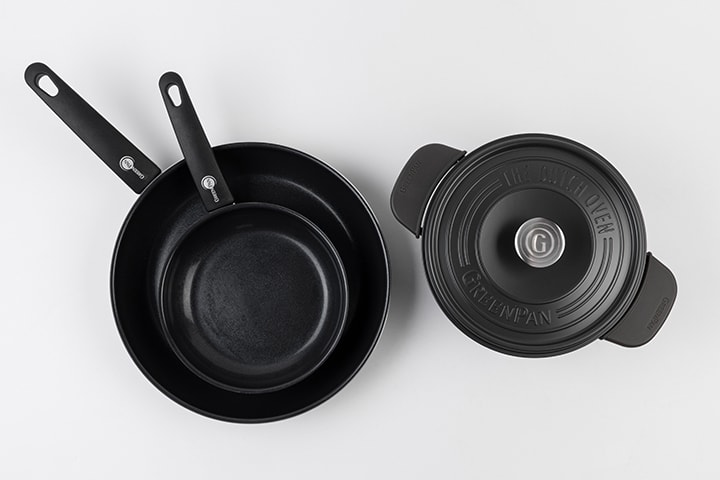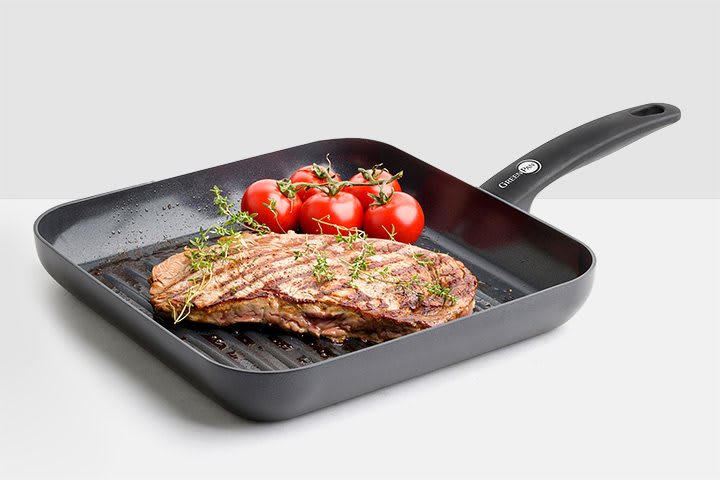–What's the deal with ceramic-coated non-stick cookware? All your questions answered
Ceramic-coated non-stick cookware has been gaining popularity in kitchens all over the world, and with good reason — it’s sleek, modern, and impossibly non-stick!
These often colourful, aesthetically pleasing sets are a fantastic alternative to traditional non-stick pans, offering the ideal surface for a delicate cook — think of flipping moreishly flaky fish fillets or rolling mouthwatering omelettes.
Not only is this cookware safer at higher temperatures and more durable than other non-stick options, it's also nearly impossible to chip, dent or scratch! If this has you mentally comparing ceramic-coated pans to your tried-and-tested non-stick coated skillet, just know that ceramic-coated is easier to clean and often cheaper, too.
So, if you’re looking for something that is easy to maintain, stylish and durable — ceramic non-stick cookware is exactly what you’re looking for. Here’s our guide on what it’s good for, what it isn’t good for, and how to take care of your trusty ceramic-coated cookware.

–Why we love ceramic-coated cookware
- Ceramic coating provides a no-nasties non-stick surface free of PFOAs, allowing you to cook with minimal oil or butter
- Most food residue slides off effortlessly with a gentle wipe making cleaning a breeze
- They often come in aesthetically pleasing, colourful designs which is always a win in our eyes
- Ceramic coatings are also excellent for distributing heat evenly, preventing hot spots and ensuring consistent cooking results
- Generally speaking, ceramic-coated non-stick cookware is usually easier on the pocket and offers great value for money, which is great if you're shopping on a budget
- Pots and pans with a ceramic non-stick coating are usually lightweight making them easy to manoeuvre and to clean
–What is it good for?
- It’s the absolute best for cooking delicate fish, eggs or pancakes thanks to the super-sleek finish
- Unlike some non-stick coatings, ceramic is non-reactive and can handle acidic ingredients like tomatoes and vinegar without compromising its surface
- Many ceramic coated pans are oven safe, allowing you to start cooking on the stovetop and finish in the oven

–What isn't it good for?
- Ceramic coatings may not handle extremely high temperatures as well as some other materials, so avoid searing at very high heat
- Rapid temperature changes are not recommended. Avoid exposing ceramic-coated pans to drastic temperature changes, such as transferring them from the stovetop to a cold surface or immersing them in cold water while still hot
–The inside scoop on caring for your ceramic-coated cookware
- You should always preheat carefully — the trick is to preheat your ceramic pan on medium heat before adding oil or food to prevent sticking
- While some ceramic-coated cookware is dishwasher safe, hand washing is definitely the gentler option and will help prolong its life
- Avoid overheating to prevent damage to the ceramic coating — a nice medium heat is usually good for most cooking tasks

–Hot (cleaning) tip!
- Always let your ceramic-coated non-stick cookware cool down before washing to prevent thermal shock which can damage the coating
- For more stubborn food residue, sprinkle baking soda in the pan with a few drops of water to create a past-like consistency and let it sit overnight, it should wipe away with ease the next day
